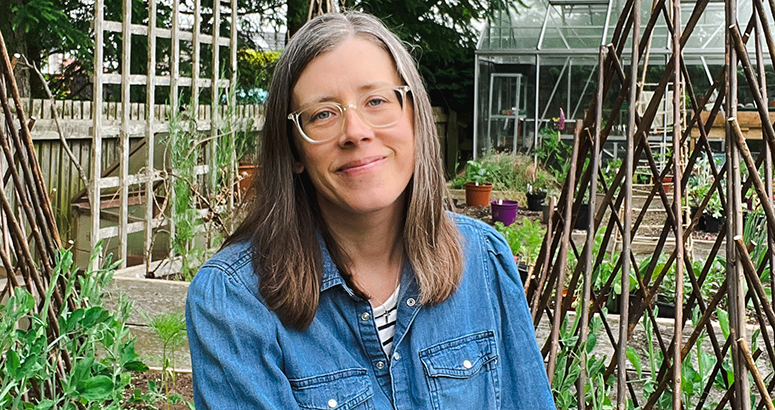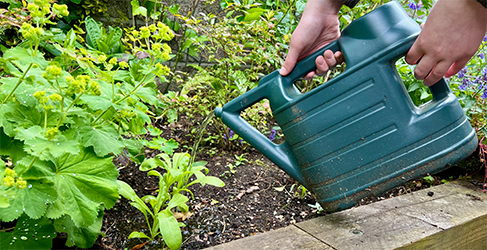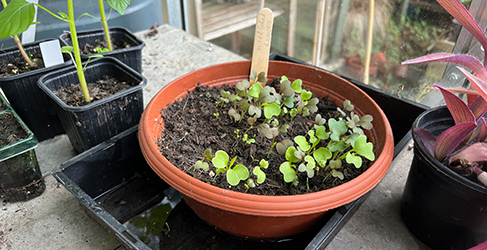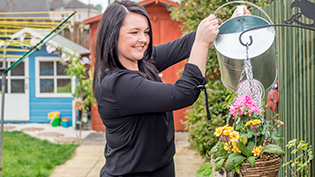BLOG: Our Gardens Can Bloom Without Wasting Water - Julianne Robertson
24 June 2024
Blooming
Julianne explains how gardeners can have blooming gardens AND save water
Watering your plants in the growing season is a priority for gardeners - after all, plants can’t survive without it - but conserving water is also very important for our changing climate. Reducing the amount we use helps to save energy and carbon emissions and ensures a steady supply, even in extreme weather conditions. So how can we ensure our gardens bloom without wasting one of our most precious resources?
Our guest blogger and gardening influencer Julianne Robertson offers gardeners her expertise on a blooming garden all summer while doing your bit to save water.
Why is watering plants important?
Water is essential for plants to germinate, grow, and stay healthy; along with carbon dioxide and sunlight, it’s how they make food, and it carries nutrients from the soil via the roots up the stems to the leaves, fruit, and flowers. Without water, these processes would be limited or stop altogether, causing the plant to wilt and eventually die.
Some plants need more water than others - very young or leafy plants can require a lot of watering when they’re growing as it helps with the development of new leaves, flowers, fruit, and seeds; others, such as succulents and cacti, can last for weeks without needing fresh water as they’re good at storing it in their thick, fleshy leaves. It’s helpful to get to know the watering requirements of your plants because some may not need as much as you think, while others need more watering at different stages of growth. When you know what your plants need, you can use water wisely.
Watering needs to change throughout the season
Throughout the spring and summer in particular it’s a good idea to bear in mind the different watering requirements at different times of the season. In early spring when we’re sowing seeds and starting off vegetables or annual flowers it’s important to make sure the soil stays moist to allow the seeds to germinate and for the new shoots to be able to develop their first proper leaves.
A good way to do this in the early days is to keep a shallow tray, basin, or other container filled with a couple of inches of water. Rainwater is ideal as it ensures plants have the right balance of nutrients to thrive, and it’s easy to collect by simply leaving the tray or basin outside on a wet day! Alternatively, if you have a water butt or dipping tank, fill your container from this, and set the seedling trays into it whenever the soil is becoming dry. The water will be absorbed from the bottom up, which encourages strong roots to go down into the soil, and avoids the fragile new growth being damaged by watering from above.
It also avoids waste as the water can be used several times until it's used up, and can be topped up with just the right amount to ensure the seedling tray is sitting in a centimetre or two of water. It’s time-saving too as they can be left in place while you get on with something else, and removed when you can see the top layer of soil is darker and feels damp.
I also use this technique for small pots and indoor plants - it’s less labour-intensive than the watering can and is much more efficient and less wasteful than a hose or sprinkler. It’s an effective method to allow the plants to absorb as much water as they need in much the same way as they would if planted in the garden.


Once your seedlings have developed enough with a strong root system and plenty of leaves it’s time to plant them out into the border - how much water do they need then? Well, it’s important to keep these well-watered for a week or so after they’ve been planted out, especially if the weather is dry and warm or windy. At this stage, the plants will be busy trying to cope with the shock of being moved and growing new roots to put down into their new position, so they need plenty of water to establish. Use a watering can to deliver a generous amount to the soil directly around the stem every couple of days - unless it’s been raining heavily, in which case nature is taking care of things for you! After about a week or two they should have recovered well enough to cope, and their new roots will be going down far enough into the soil to access the moisture available at deeper levels.
Wise watering for your greenhouse
Some plants are particularly thirsty - especially in a greenhouse, or a hot, sheltered spot, where higher temperatures will mean the soil dries out quicker. Fruit and vegetables like tomatoes, cucumbers, squash, courgettes, and lettuce need consistent moisture levels to produce lots of leaves and flowers and develop healthy, tasty fruit. Typically these will be in raised beds or pots, and it’s easy to check how dry the soil is by digging down a few inches to check how much moisture is below the surface level. Some pots may look dry on top (especially if you’re using peat-free compost which can dry out quickly on the surface) but still be holding plenty of water further down. It’s important to check so that you don’t over-water and therefore use more water than you need to.
If these plants do need topping up, use a watering can around the base of the stem until you start to see water coming out of the bottom of the pot. In my greenhouse, I use a variety of large pots, and some of these are self-watering, which saves time and water, as they can be filled up and last a week or two, with the plants drawing the moisture they need from the reservoir at the base of the pot, taking up what they need, whenever they need it. These types of containers are relatively inexpensive and long-lasting and can be used year after year - a good investment if you like to grow your own.
Using some of the above tips and techniques means you should have happy, healthy plants all season long, and you will still be using water wisely. Water is always worth saving, even in your summer garden!








